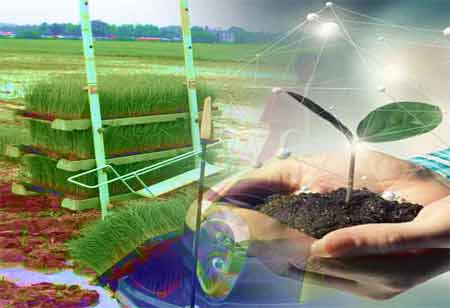Thank you for Subscribing to Agri Business Review Weekly Brief
Optimal Methods for Sustainable Farming
The best farming practices are a comprehensive approach to sustainable farming, encompassing techniques like integrated pest management, nutrient management, waste management, energy efficiency, and biodiversity conservation

By
Agri Business Review | Tuesday, March 05, 2024
Stay ahead of the industry with exclusive feature stories on the top companies, expert insights and the latest news delivered straight to your inbox. Subscribe today.
The agriculture sector is fostering a greener, sustainable future by promoting ecological balance, food security, and climate resilience through innovative cultivation methods.
Fremont, CA: The best farming practices are a comprehensive approach to sustainable farming, encompassing techniques like integrated pest management, nutrient management, waste management, energy efficiency, and biodiversity conservation. It aims to enhance agricultural practices, protect natural resources, reduce environmental impact, and enhance productivity and resilience, contributing to a more sustainable and accountable sector.
Conservation tillage is a farming technique that minimizes soil disturbance and erosion, promoting better soil health, moisture retention, erosion prevention, and carbon dioxide emissions reduction. It includes methods like no-till farming, strip-tilling, and mulching. These methods encourage sustainable farming practices, improve water efficiency, and reduce soil erosion. They lead to increased crop yield, better water infiltration, less silt buildup, and better soil health, fostering biodiversity and weather resistance.
The rotation of crops involves changing crops over time to manage pests and diseases, enhance nutrient availability, and improve soil health. It disrupts pest cycles, reduces soil erosion, and promotes resilient farming systems, plant health, and reduced reliance on chemical pesticides.
Agroforestry is a land management technique that combines trees with livestock or agricultural products, enhancing sustainability and ecological services. It promotes biodiversity preservation, sustainable land use, and environmental resilience. Benefits include increased productivity, soil conservation, and economic diversification. Techniques like alley cropping and silvopasture improve soil health, reduce erosion, increase biodiversity, and sequester carbon, supporting environmental sustainability.
Integrated pest management (IPM) is a method that combines cultural, biological, and chemical control strategies to reduce synthetic pesticide usage. It aims to manage pest populations efficiently, minimize harm, and promote sustainable practices. IPM protects non-target creatures, maintains ecosystem health, and reduces environmental contamination.
Sustainable agriculture depends on healthy soil, which promotes plant growth, water infiltration, and beneficial soil organisms. It reduces synthetic input demand, mitigates climate change, and enhances crop output. Techniques like composting, organic amendments, and cover crops are crucial for sustainable agriculture, improving soil structure, controlling weed growth, and boosting organic matter. These practices contribute to the sustainability of agricultural systems and long-term soil health.
Water retention and soil fertility improve agricultural productivity and nutrient availability. Effective water management in agriculture contributes to global food security and environmental sustainability. Dribble irrigation, precise watering, and recycling ensure sustainable irrigation, efficient use, and water conservation. Water resource conservation protects water quality, maintains aquatic ecosystems, and sustains environmental and human well-being by reducing water pollution.
Biodiversity is the diversity of living things in an ecosystem, crucial for ecosystem resilience, pollination, natural pest management, soil fertility, and sustainable farming practices. Biodiversity conservation in agricultural environments includes hedgerows, wildflower strips, bee and butterfly conservation, and biological pest management. These methods ensure long-term sustainability and productivity, promoting a healthy environment for crops and wildlife.





